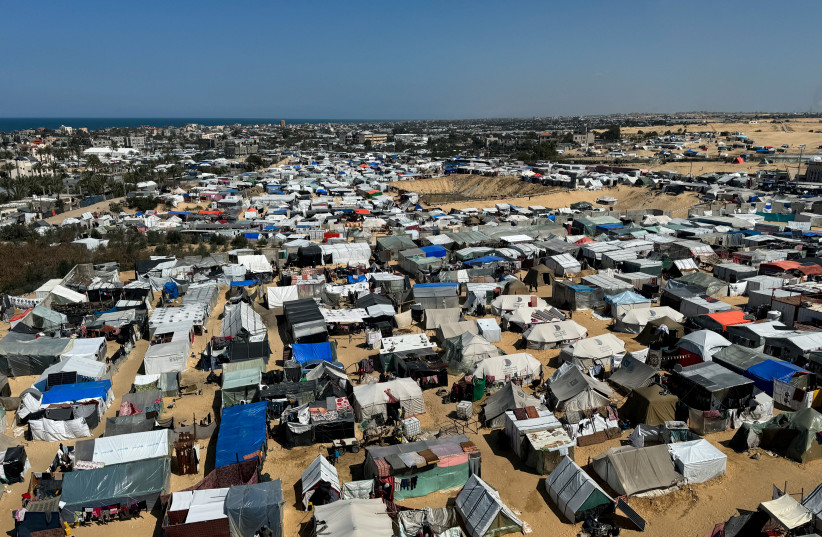The Defense Ministry has purchased 40,000 tents to better enable the evacuation and prepare for an invitation of Rafah in the relatively near future.
Although the ministry acknowledged to the Jerusalem Post that 40,000 tents would not be enough for all 1.4 million Palestinian civilians currently in Rafah, it is still considered a significant step forward.
There was no official announcement. The leak of the purchase could also be a nod to the US, being transparent about the process to prepare for the evacuation in advance after months in which Washington complained that Israel’s preparations for evacuating civilians were both too secretive, and insufficient.
In addition, leaking it could be a serious attempt to signal to Hamas that Israel means business about invading Rafah - if there is no hostage deal in the near future.
Israel and the US have been debating whether the evacuation of the Palestinians from Rafah would take one to four months.

The IDF is hopeful that significant numbers of civilians self-evacuate and will return to Khan Yunis following its withdrawal from that area on Sunday, which might also decrease the number of tents needed.
Evacuating them up to Khan Yunis
To date, the IDF’s plan for evacuating civilians from Rafah included moving them back to Khan Yunis, to Muwasi on the coast near Rafah, and to central Gaza.
But an additional twist has been that Israel’s plans were focused on moving the civilians out of Rafah, whereas Washington wanted Israel to also ensure there would be tents, food, and medical field centers ready to absorb them in the areas they were being moved to.
The military announced Tuesday morning that the air force assassinated Hatam al-Amri, a leading Hamas figure in central Gaza, who has also been involved in firing rockets at Israel.
Further, the IDF continued some small cleaning-up operations against rank-and-file Hamas terrorists in central Gaza.
The IDF provided no updates about what Palestinians were doing in Khan Yunis from which it withdrew.
In the North, the IDF identified one rocket launch from Syria fired toward the area of Yonatan in the Golan Heights and returned fire, striking the source of the launch on Monday night, the IDF announced on Tuesday.
No injuries or casualties were reported in the attack.
The recent launches come amid heightened tensions in Israel’s north.
Iran has vowed to avenge the death of the senior commander in the Quds Force of the Iranian Revolutionary Guards Corps (IRGC), Mohammed Reza Zahedi, who was killed in an alleged Israeli airstrike in Syria earlier in April.
Jerusalem Post Staff contributed to this report.
